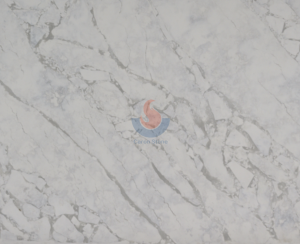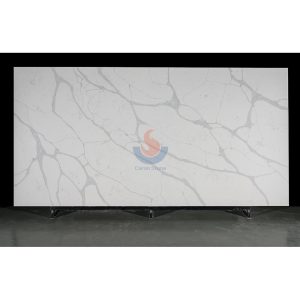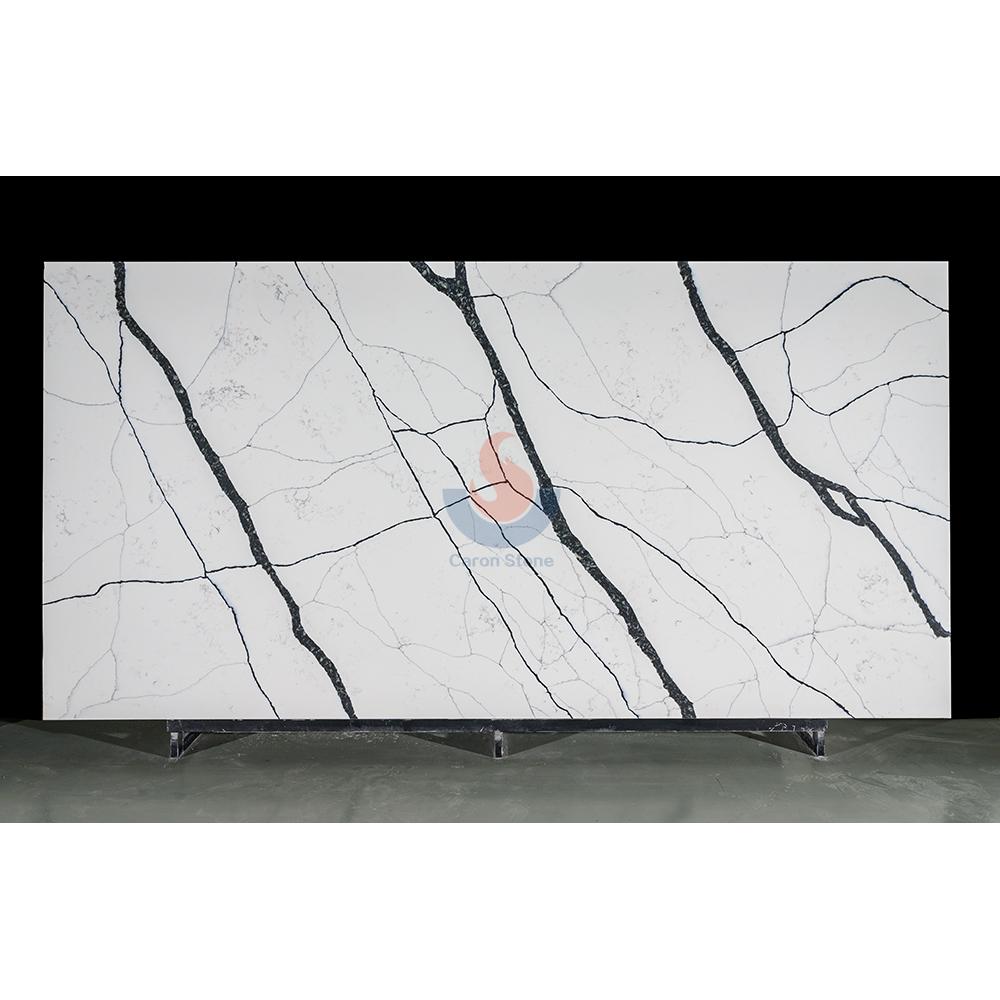In modern industry and scientific research, the choice of materials is crucial to ensure the smooth progress of the process and the accuracy of scientific research results. Because of its unusual physical and chemical characteristics, quartz slab—a particular non-metallic substance—has evolved as the preferred material for many high-temperature uses. This article will explore the high-temperature resistance of quartz slab in depth, analyze why it can remain stable without cracking under extremely high temperature conditions, and discuss how this property enables it to play a key role in many fields.

Super white Artificial Quartz Slab
Physical properties of quartz slab
Silicon dioxide (SiO2), a chemical extensively found in nature, makes up the bulk of quartz slab. Quartz slab has numerous special physical characteristics based on its crystal structure from silicon. First of all, quartz’s exceptionally solid crystal structure lets quartz slab keep its structural integrity at high temperatures and is not easily prone to deformation or fracture. Second, the thermal conductivity of quartz is relatively low, which means that heat propagates slowly in the quartz slab, which helps the quartz slab maintain a uniform temperature distribution at high temperatures and reduce thermal stress caused by temperature gradients.
Chemical stability at high temperatures
The chemical stability of quartz slab is one of the key factors that enable it to withstand high temperatures. Many materials will chemically react at high temperatures, degrading their material performance or maybe causing cracking. But silicon dioxide, the principal component of quartz slabs, is not easily chemically reacted with other elements and is rather stable at high temperatures. This chemical stability allows quartz slabs to be used for long periods of time in high temperature environments without degradation. In addition, quartz slabs have good corrosion resistance to most acids and alkalis, which further enhances their reliability in chemical laboratories and industrial applications.
Thermal Expansion Coefficient
Because of a rather low thermal expansion coefficient, quartz slabs cause less change in volume with temperature. Quartz slabs used at high temperatures depend on this function since it helps to lower internal stress generated by temperature variations, therefore lowering the risk of breaking. Because it can lower measurement mistakes brought on by temperature swings, a low thermal expansion coefficient also helps explain why quartz slabs find usage in precision instruments.
Impact of Manufacturing Process
High temperature resistance of quartz slabs depends much on their production technique. Strict quality control on premium quartz slabs guarantees material homogeneity and purity throughout manufacturing. In addition, some special manufacturing techniques, such as vacuum melting, can further remove impurities from quartz slabs and improve their high temperature resistance. These techniques raise the quartz slab’s physical strength as well as its stability under demanding situations.
Application fields
Quartz slabs are extensively employed in many different disciplines since their great temperature tolerance. Quartz slabs are frequently used as linings for high temperature furnaces in semiconductor manufacture to guard silicon wafers from high temperature and chemical deterioration. Quartz slabs are frequently used as high temperature resistant experimental equipment in laboratories; examples of such equipment are quartz test tubes and quartz crucibles. Furthermore quite significant in the building, solar panel, and aerospace sectors are quartz slabs. For example, in the production process of solar panels, quartz slabs serve as bearing and protective materials to ensure the stability of the production process and the high quality of the panels.
Precautions for safe use
Quartz slabs have great high temperature endurance, however safety should still be given top importance while operation. For example, quartz slabs may crack due to internal stress when cooled rapidly. Quartz slabs should thus be used with careful avoidance of fast temperature changes to lower the risk of cracking. Furthermore, in some conditions quartz slabs may react with particular substances; hence, suitable material selection and risk analysis are needed in particular uses.

Calacatta White Quartz 47
The reason why quartz slabs can withstand high temperatures without breaking is mainly due to their stable crystal structure, chemical stability, low thermal expansion coefficient and high-quality manufacturing process. For high-temperature surroundings, these qualities make quartz slabs the perfect material. As science and technology keep developing, the uses for quartz slabs will grow and their high-temperature resistance will keep being crucial for the growth of human civilization. Through in-depth research and reasonable application of quartz slabs, we can better utilize the potential of this material and promote the advancement of science and technology and innovation in industrial production.





